I want to turn on a transistor by playing sound through my computer's soundcard. I thought that this simple circuit with a diode to rectify the AC, capacitor to smooth it out, and a transistor to switch would work.

simulate this circuit – Schematic created using CircuitLab
But it didn't work. What's going wrong?
Note: What I'm actually trying to do is trigger the PTT on a Yeasu FT-60R hooked up to my computer when the computer starts playing sound. My plan is to use one audio channel as the audio input to the radio, and the other input to drive this circuit. The transistor would connect the radio's MIC line to GND through a 2k resister, which is supposed to trigger PTT. The LED circuit is just to see if the idea works at all.

